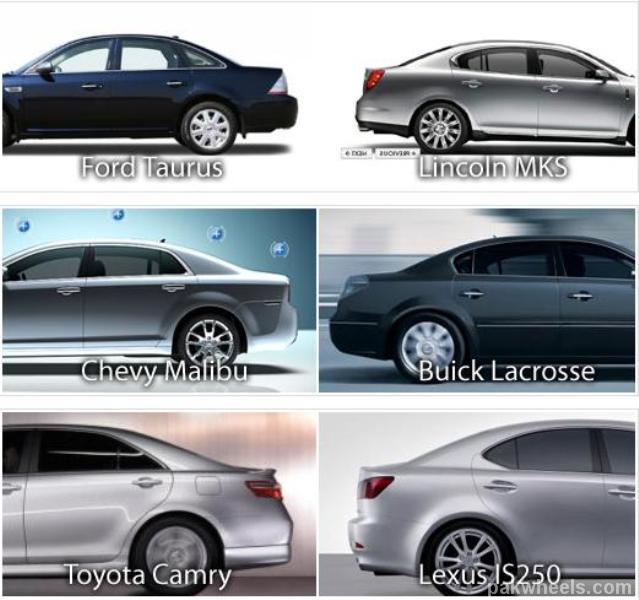You got it!
Hofmeister kink is another trademark design of BMW alongwith the kidney-grills!!
The Hofmeister kink (sometimes also translated Hofmeister kick, German: Hofmeister-Knick) is an
automobile design
feature seen on modern BMWs. It is a low forward bend in the
C-pillar
of the car, which is the piece of metal that separates the rear side windows from the rear glass. The kink formally debuted on the 1961
BMW 1500
at the 1961 Frankfurt Motor Showsup/sup and was later named after then-BMW director of design, Wilhelm Hofmeister.sup/sup
Apart from its pleasing effect, the Hofmeister kink is said by BMW to subtly highlight the fact that all BMW models have
rear-wheel drive
sup./sup
Note that this design feature is not unique to BMW models. Similar
C-pillar
kinks have appeared on cars of other brands both before 1961 and since. For example, the 1951 Kaiser Deluxe Golden Dragon shows a considerable "Hofmeister kink" in its greenhouse design.sup/sup However, the term "Hofmeister kink" is only used in reference to BMW automobiles, as it has become a distinctive styling cue used across all BMW model series.
Jalopnik last year in its article named it the number 1 design element in car design;
Click on the following heading to see all the nominees:
h1The Ten Best Car Design Elements Of All Time./h1

Though most people will recognize a BMW by its trademark kidney-shaped grille, the true enthusiast will recognize the small wedge at the base of the C-pillar, which highlights the rear wheels of the rear-wheel-driven cars. Though some have argued this element first appeared on the 1960 Dodge Dart, Wilhelm Hoffmeister rightly gets credit for creating such a distinct and memorable element for the Neue Klasse Bimmers of the 1960s and 1970s. This element is present in nearly every BMW you'll ever see, which is why Ash78 and so many others nominated it. It looks great even on a Bangle-ized Bimmer, but we think one of the best examples is the 1965 BMW 2000C/CS coupe.
h2How Manufacturers Use the Kink to Distinguish Marques/h2
Auto manufacturers typically have more than one marque of car so that they can target both luxury car buyers as well as more value-minded consumers. A manufacturer often competes with itself, offering similar cars across marques that differ primarily in levels of luxury. Some examples of differet lines from different manufacturers are:
- Ford - Mercury/Lincoln
- Chevy - Oldsmobile - Buick - Cadillac
- Honda - Acura
- Toyota - Lexus
- Nissan - Infinity
I've noticed that many of these brands has been the use of the Hofmeister Kink to distinguish between similar models of different marques. Below are some examples:

There are many other examples (and a couple counter-examples) but the trend is clear, particularly when looking at cars made after the mid 1990s. Some notable exceptions are:
- Mercedes - As mentioned above they are unlikey to use a signature design feature from BMW.
- Cadillac - They currently have a very strong design language of their own.
- Honda/Acura - The Accord and its Acura equivalents all have the Kink
- Nissan/Infiniti - All of their cars have the kink (not true a decade ago)
h2Korean Manufacturers Try to Move Upmarket/h2
The Korean auto manufacturers, Hyundai and Kia are seemingly trying to duplicate the path to success that Honda used. Start with cheap economy cars, earn a reputation for quality and move upmarket into more expensive luxury models. In the last couple of years, both Hyundai and Kia have introduced more luxurious sedans and SUVs. While the Kia Amanti has clearly taken heavy design inspiration from Mercedes (no kink!), its Optima sedan is more in line with other manufacturers. Below are two examples:


h2Conclusion/h2
This seemingly inconsequential detail has developed into a key theme of automotive design. It is clear that automotive designers work within a set of guidelines they understand well, knowing how the details impact public perception. This aspect of design is certainly not only relegated to cars, but is carried through other design mediums as well. Web design is no exception. There are features of a site that can be used to instantly exude professionalism and sophistication.
I wanted to take this time to turn it over to the readers and get your thoughts on your favorite subtle design techniques, only noticeable to a very discerning eye, that instantly convey a level of beauty to the site's visitors. What elements come to mind?